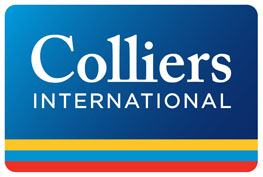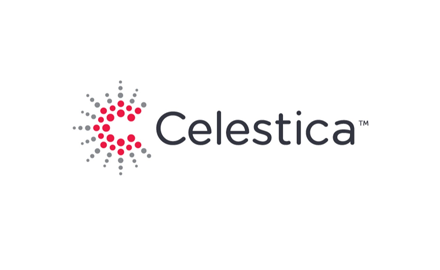Canadian wealth management is about to undergo a seismic shift. CRM3—better known as Total Cost Reporting (TCR)—isn’t a tweak around the edges. It’s a full-blown overhaul of how costs are shown, explained, and, most importantly, understood by clients.
“This isn’t a minor policy tweak,” says host Pierre Daillie on Insight is Capital. “It’s a full-scale overhaul of the investment cost conversation… Clients will see it all in black and white, the numbers, the totals, and by extension, the value you deliver as an advisor.”
The question hanging over every advisor’s desk is simple: will this new level of transparency build trust—or break it?
From CRM2 to CRM3: Why This Moment Matters
To make sense of it all and unpack the complexity—and opportunity—of this disclosure transformation, three insiders joined Daillie:
• Arnie Hochman, SVP & General Counsel, SIMA (Securities and Investment Management Association,
• Dr. David Lewis, an Independent Director and Behavioural Scientist with groundbreaking research on transparency and trust, and,
• Steve Braugiroux, Associate Vice President, Dealer Relations at National Bank, who’s deep in the trenches of implementation.
Together, their conversation lays out not only the technical roadmap, but the behavioral and strategic edge advisors can gain—if they get ahead of the curve.
SIMA's Arnie Hochman explains how we got here: “CRM2 was introduced completely in 2016… shortly after that, there was a fairly significant clamour for additional information… the regulators… started to work towards a more complete picture of costs. And the result of that is Total Cost Reporting or some call it CRM3. It was a very long journey. It took the better part of 10 years.”
That journey wasn’t just bureaucratic. As National Bank’s Steve Braugiroux points out, it was logistical chaos: “One of the major difference between CRM2 and now Total Cost Reporting… CRM2, it was all the dealer fees. So dealers controlled it. The problem with Total Cost Reporting is now we’re reporting fees that do not belong into our systems, that are not our costs. And so we had to work with those third parties… Depending on how big your shelf is, you could have hundreds of those firms you have to work with.”
In other words, to make TCR possible, the industry had to build an entirely new plumbing system for data that simply didn’t exist before.
What Clients Will Actually See
When the first statements go out in January 2027, they’ll boil down to three things. As Braugiroux puts it: “The first one is the fund expense in dollars. The second one is the direct investment fund charges in dollars again, and the last one is the fund expense ratio as a percentage.”
For clients, it’ll be the first time all these costs appear together, in one document. As Hochman stresses, “all the disparate disclosure which occurs in different places is now consolidated into one document, and it makes it much easier for the client to both find it and hopefully understand it.”
Transparency Builds Trust—Not Fear
The industry’s biggest worry is that clients will look at these new statements, see the numbers, and recoil. But Dr. David Lewis’ research says the opposite:
“What we actually found was that transparency increased trust… Oftentimes they [the clients] overestimated what those fees were. What we found was that when there was full transparency and those embedded commissions were actually made transparent, it was often less than what people assumed they would be… the result actually was that… the level of trust in the advisor and the financial institution increased when there was transparency.”
Lewis found transparency doesn’t just calm fears—it makes clients “less price sensitive, more willing to pay for advice, and they in turn link that advice to the value of the advice they are receiving.”
Daillie, drawing on his own experience with full transparency as an advisor, agreed: “Clients felt relieved. Because there was no surprises. There was no hidden element. They liked the fact that… I was upfront… It does tie positively back to value as opposed to misgivings and suspicions, which would actually take away from value.”
The Messy Parts Advisors Can’t Ignore
Of course, nothing this big comes without headaches. Foreign-listed ETFs are a prime example. With over $200 billion in assets parked in US-listed ETFs, they pose a serious reporting challenge. “That’s a big amount of work for the dealers… you've got to go get that information when on the other side who are not interested in giving it to you unless they’re forced,” Braugiroux admits.
And Hochman warns of reputational risk: “If there are more than a couple stories in the press about blatantly incorrect or missing information, that then provides a negative halo for the industry as a whole. So it’s incumbent on all of us to use our very best efforts to get it right out of the box.”
A Chance to Redefine Value Conversations
Instead of fearing the spotlight on costs, advisors can use it to their advantage. As Daillie suggests, the new reports can lead to, the opportunity, for example, for “a further discussion… which is fee budgeting.” Advisors can highlight the balance between low-cost index products and higher-fee, value-adding strategies like alternatives—which is indeed a high value discussion.
Lewis confirms the opening: “We look at people’s willingness to pay for advice… the answer isn’t zero. The answer is, well, that depends on what the value of that advice is… Over 93% of the variance in portfolio returns is due to asset allocation. If, for starters, you can have that discussion… people are willing to pay for that advice.”
And beyond allocation, Lewis reminds advisors where their greatest impact lies: “When the markets are going up, people say buy, buy, buy. When they’re going down, they say, sell, sell, sell. Countless studies have demonstrated the timing the market is impossible. Financial advisors need to have conversation with their clients about "what are your long-term goals?"… and use newfound trust… to create a conversation around the future, around goals and behaviour change.”
Get Ahead of 2027—Now
The last thing any advisor wants is a panicked phone call when the first TCR statement lands. Lewis is blunt: “You need to tell them now what they’re gonna hear and what they’re gonna see… as opposed to them calling you up in… January, 2027 saying, what did I just get? What is this? What does this all mean?”
Daillie echoes that urgency: “You absolutely have to get way out, as far out in front of it as you can so that… you’re having an enjoyable conversation… rather than getting a flood of phone calls full of questions, about fees, after the fact.”
Building Industry Consistency
The good news is the industry isn’t facing this alone. SIMA is actively coordinating efforts, with Hochman noting: “We have 200 people plus engaged in our TCR task force… The first two documents we produced are an FAQ… In addition, we provided a series of five examples and then a summary comparative chart.”
Braugiroux praises the collaboration: “The industry’s gotta get together… so that nobody is caught flat-footed. Even more important, so there’s a consistency in terms of the information… I’m very pleased to see all the collaboration that has happened in Canada to date.”
Bottom Line
CRM3 isn’t just about compliance. It’s about trust. It’s about showing clients the true cost of their investments—and using that moment to showcase your value.
Transparency doesn’t weaken advisors. Done right, it strengthens the relationship. As Lewis’ research shows, when clients finally see the numbers, they don’t recoil. They lean in.
Listen on The Move
Copyright © AdvisorAnalyst.com















